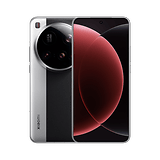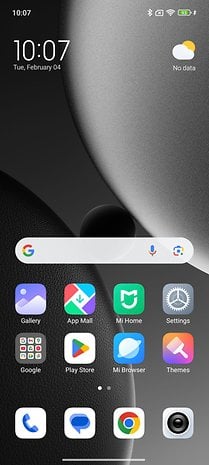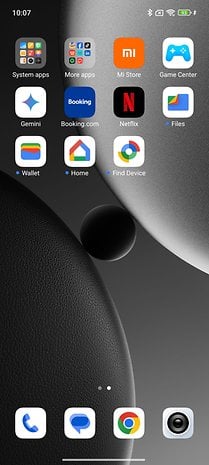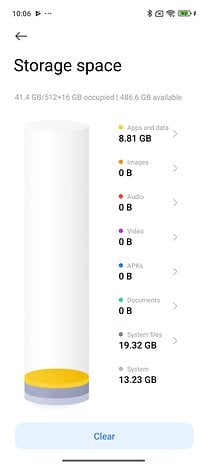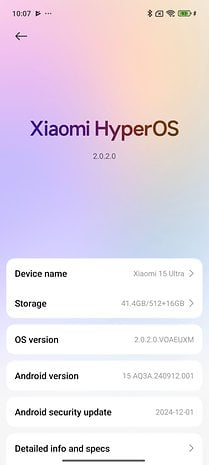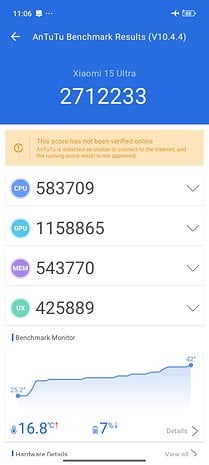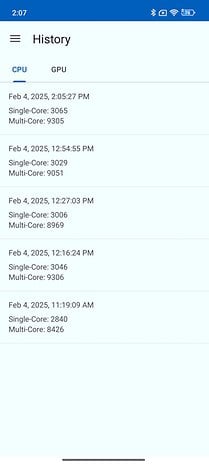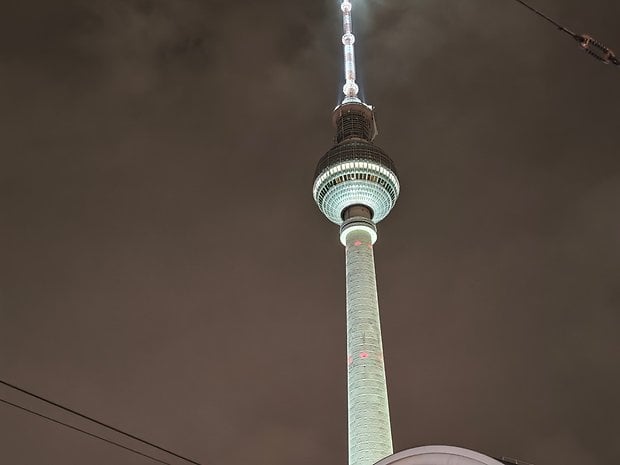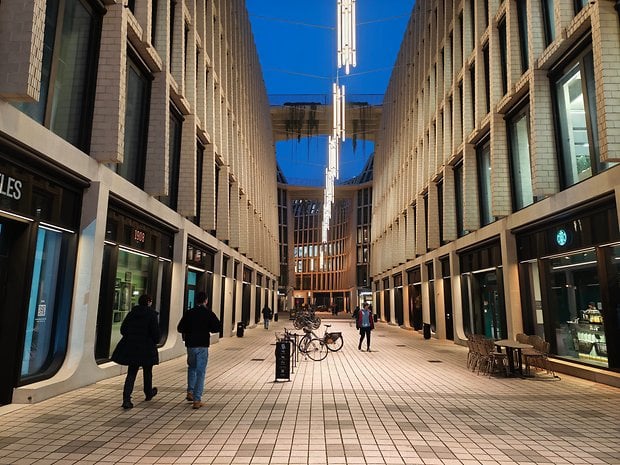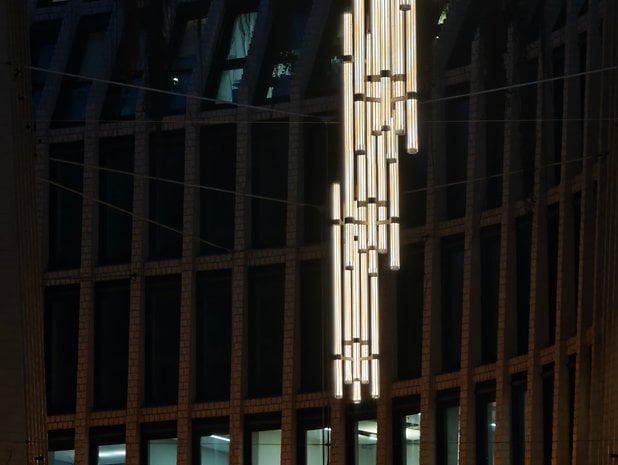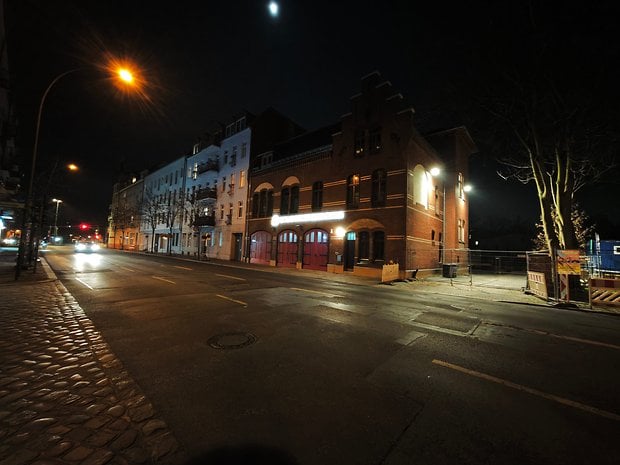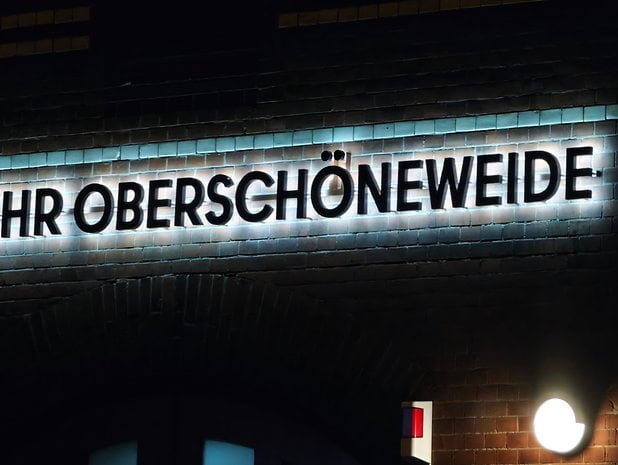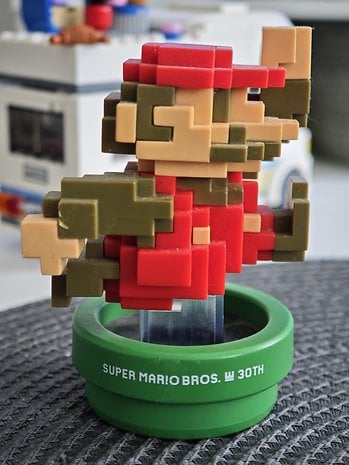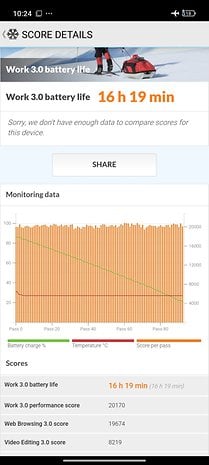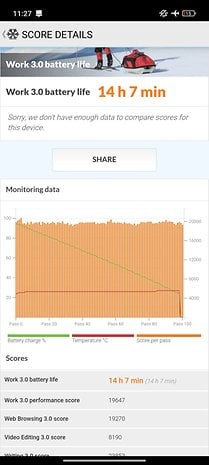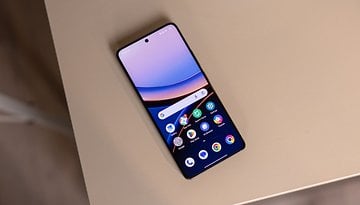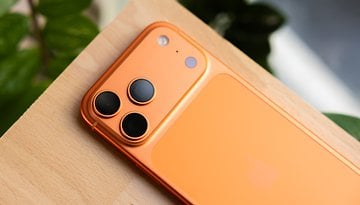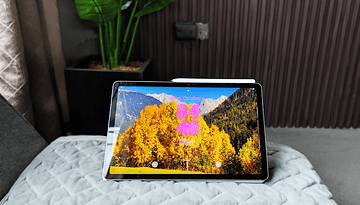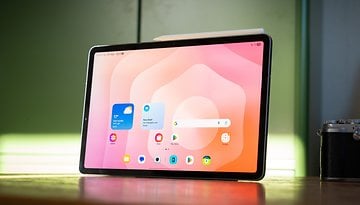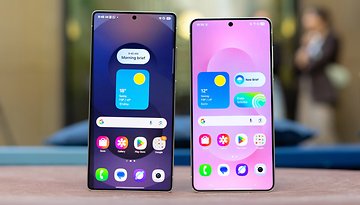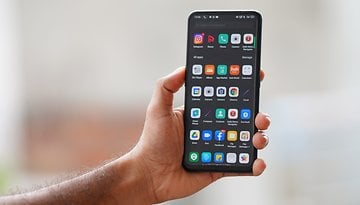Xiaomi 15 Ultra Review: Is It Truly Worthy of the Ultra Name?


A new year brings a new batch of Ultras. And with MWC 2025 Xiaomi launched its new range of flagship phones spearheaded by the Xiaomi 15 Ultra. Top-notch Leica cameras, excellent display, and the best-performing Android chip. Let’s see if it is worthy of the Ultra name in our in-depth review.
Good
- Excellent telephoto and main cameras
- Top-notch performance
- Good build quality
- Excellent display
Bad
- Weak ultra-wide camera
- No charger included
- Longer charging times than other models
- Bloatware
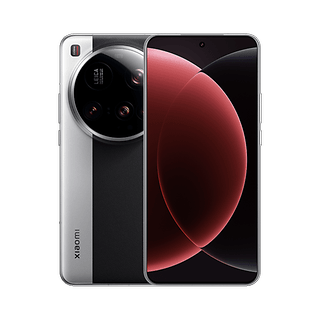
Camera-like Design for Our Xiaomi 15 Ultra
| Design and Build Quality | |
|---|---|
| Display |
|
| Dimensions and weight |
|
| Resistance |
|
The Xiaomi 15 Ultra features a traditional “big phone” design, dictated by its 6.73-inch display. That not only resulted in a smaller phone compared to its main competitor, the Samsung Galaxy S25 Ultra we recently tested, but it also presents better ergonomics, thanks to the rounded back and even the edge display (more on that later).
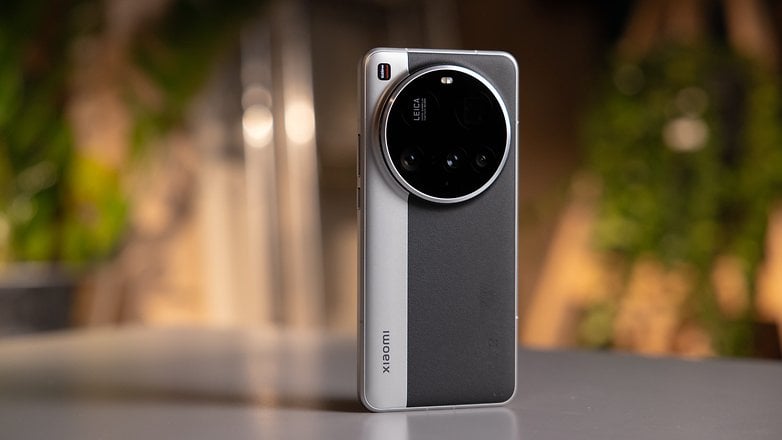
The 161.3 x 75.3 x 9.35 mm body features an IP68 rating for dust and water protection and can come in three different colors: Black, white, and the tested “silver chrome”. The packaging included a basic protective case, the SIM tray tool, and a USB-A to USB-C cable. There is no charger in the box.
Looking at the Xiaomi 15 Ultra’s back, the big round Leica-branded camera island is definitely the highlight, despite our review unit coming in the camera-style two-tone “silver chrome” version. There is even a tiny “Ultra” logo with red highlights on the corner, a probable reference to the mythical Leica red dot logo.
The build quality is excellent on the Xiaomi 15 Ultra, even when mixing different materials, we couldn’t notice sharp edges or obvious panel gaps. Better still, the ergonomics were nice, with all the buttons in the right places, the rounded edges on the back, and the smaller dimensions compared to the Galaxy S25 Ultra, make the Xiaomi flagship easier to grip.
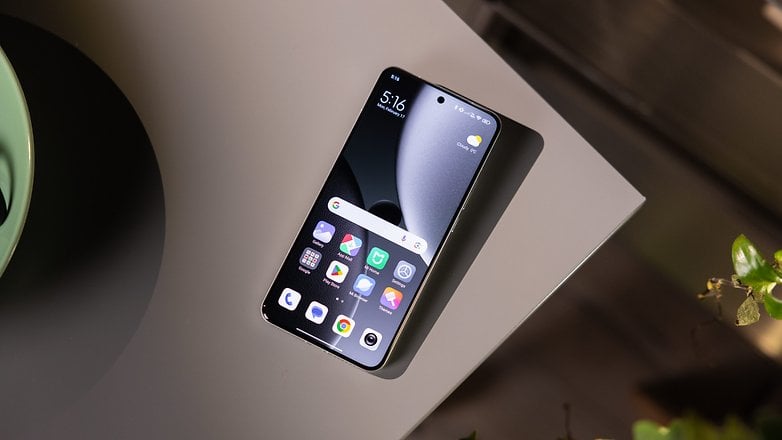
What looks good but doesn’t help the ergonomics much is the big OLED display in the front. The curved edges still look premium, but we had the usual issues with unwanted touches being registered. Anyway, the screen is protected by Xiaomi’s own Shield Glass 2.0 and features a high 3,200 x 1,440 pixel resolution and a variable refresh rate between 1 and 120 hertz for smooth browsing and animations.
Peak brightness is as high as most recent flagship phones, with a rated maximum of up to 3,200 nits. In daily use, the screen was always bright enough, and we usually had to lower the brightness even in the automatic setting. And to those who like to read in bed, the brightness can go low enough not to call your partner’s attention while still being legible.
Bloatware with Flagship AI Sprinkles
| Software | |
|---|---|
| Operating system |
|
| Update policy |
|
Packing Xiaomi’s latest HyperOS software on top of Android 15, the Xiaomi 15 Ultra did not have most of its in-house AI features available during testing. Xiaomi promised to deliver those after the launch, so we didn’t have time to check them.
A teaser panel on the Settings app suggests features such as AI-assisted writing, real-time audio transcription and translation, summary writing, and image editing (e.g. generative expansion, object removal), similar to those found on other flagship phones in the past year.
The Xiaomi 15 Ultra also packs Gemini support, with the same tools found in Pixel and Galaxy phones. The integration with Gemini, however, does not extend to the Xiaomi Notes app, for example, lacking the possibilities found in the rival Samsung flagships, at least during the time we tested the phone.
HyperOS 2 keeps the same interface from the previous version (which itself was an evolution of the previous MIUI system). And it also keeps other features such as lots of customization options, and a bunch of third-party apps from the factory.
We counted 10 apps not from Google or Xiaomi after a factory reset, and after updating the system and pre-installed apps we had 41.4 GB of used storage. With Xiaomi’s promise of AI features coming after the launch, we expect those numbers to grow considerably like what happened to Pixel and Galaxy phones.
Putting the "Ultra" in Xiaomi 15 Ultra
| Performance | |
|---|---|
| Processor |
|
| Memory |
|
| Connectivity |
|
Powered by Qualcomm’s Snapdragon 8 Elite processor, the Xiaomi 15 Ultra showed no issues in the performance category, helped by its 16 GB of fast LPDDR5x RAM and the latest storage standard UFS 4.1.
Overall performance in daily apps was as fast as any other flagship phone, with video calls, doomscrolling, messaging, multitasking, and other common tasks showing no signs of slowdowns or lag. Even real-time filter applications on video calls were snappy, alternating quickly between previews of the different effects.
| Xiaomi 15 Ultra (Snapdragon 8 Elite) |
Galaxy S25 Ultra (Snapdragon 8 Elite) |
OnePlus 13 (Snapdragon 8 Elite) |
Xiaomi 14T Pro (Dimensity 9300) |
|
|---|---|---|---|---|
| AnTuTu | 2,712,233 | 2,341,216 | 2,695,676 | 2,013,101 |
| 3DMark Wild Life Extreme Stress Test |
n/a | Best loop: 6986 Worst loop: 3253 Stability: 46.6% |
Best loop: 8751 Worst loop: 4410 Stability: 50.4% |
Best loop: 2983 Worst loop: 2633 Stability: 88.3% |
| 3DMark Steel Nomad Light Stress Test |
n/a | Best loop: 2581 Worst loop: 1363 Stability: 52.8% |
- | Best loop: 1132 Worst loop: 1086 Stability: 95.4% |
| Geekbench 6 | Single: 2997 Multi: 8951 |
Single: 3187 Multi: 9947 |
Single: 3125 Multi: 9697 |
Single: 2188 Multi: 7158 |
Gaming performance was just as flawless, at least with PUBG and Grid Autosport, with a smooth framerate and no hiccups. The phone remained cool to the touch, and gaming highlighted the surprisingly good audio and haptics in the Xiaomi 15 Ultra, even though one of the speakers is side-firing (one on the “bottom” edge). Just like other phones powered by the same Snapdragon chip, we don’t expect this Ultra to be lagging in games anytime soon.
In the usual synthetic benchmarks, the Xiaomi 15 Ultra offered class-leading performance in the Antutu test but fell slightly behind in Geekbench. We couldn’t test the performance on the 3DMark suite (which is unfortunately common with Xiaomi devices pre-launch), but expect the Xiaomi 15 Ultra to perform roughly similarly to the OnePlus 13 in the table above.
A Telephoto Camera Almost as Good as the Main Snapper
| Camera | |
|---|---|
| Main Camera |
|
| Ultra-Wide Camera |
|
| Tele Camera(s) |
|
| Selfie Camera |
|
| Max. Video Resolution |
|
Xiaomi invested heavily in photography in the last generations, especially with its partnership with Leica on image processing and optics. The Xiaomi 15 Ultra is the latest example of the companies working together, with some impressive upgrades to the zoom (telephoto) camera in particular.
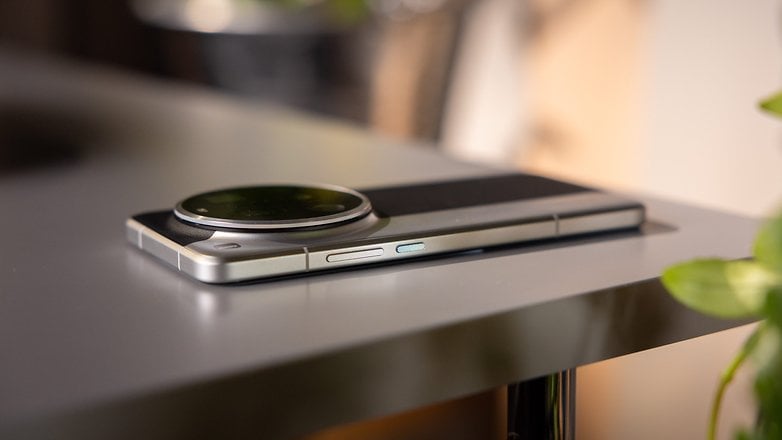
But first, let's sum up the camera setup. The main shooter is a 50-megapixel from a big (1/0.98-inch) Sony LYT-900 sensor and a fast 1/1.63 aperture; the ultra-wide is another 50 MP but from a Samsung JN5 sensor (1/2,8’’) and an average aperture of 1/2,2; the first telephoto lens has a 3x zoom with a 1/1.8 aperture over a 1/2.5’’ Sony IMX858 sensor, but the star of the show is the big 4.3x zoom.
We have seen periscope lenses used for telephoto cameras on smartphones before, as they allow for the installation of more lens elements between the device's surface and the sensor. Without this design, the sensor would need to be smaller, resulting in lower resolution, reduced sharpness, and other compromises.
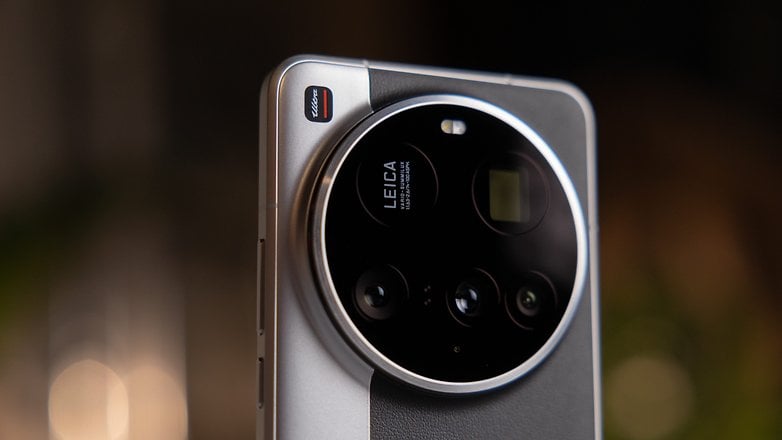
In the Xiaomi 15 Ultra, the company installed a big 1/1.4-inch Samsung HP9 sensor, which is similar in size and features to the main camera on many mid-range phones, such as the Redmi Note 13 Pro Plus or the Honor 90 we tested not so long ago.
Starting with the 4.3x zoom then, before looking into the sensor specs, we were surprised by the results in terms of sharpness and color reproduction. In most cases, we preferred going straight to 4.3x instead of using the 3x (also optical) zoom whenever possible, as results were better both in daylight and at night.
The 3x zoom offered decent results, but usually with dull colors. Same with the ultrawide. At night, both 3x zoom and ultra-wide suffered with loss of sharpness and were noticeably darker than shots from the main camera, particularly the ultrawide. Using night mode helped on those cameras, but not enough to get close to the quality from the main sensor.
Speaking of the main camera, pictures were excellent both in daylight and night, with the option to select between Leica’s “Authentic” or “Vibrant” modes. Similar to the Xiaomi 14T we tested late last year, the Xiaomi 15 Ultra also offers two portrait modes, with the big sensor offering good levels of bokeh (aka depth of field, background blur).
There is also a “Pro” mode in the camera app, offering manual control over exposure, shutter speed, ISO, white balance, and focus. As a bonus, you can save your most used presets for later, for those who like using fine-tuned settings, but not really the process of fine-tuning them…
Selfies returned natural-looking photos, and even night shots had a good level of detail. Skin color reproduction was realistic, without saturation of beauty effects applied. Portrait mode on selfies had the typical difficulty with loose hair, so don't repeat my mistake of taking a selfie without checking the mirror first.
Not so Fast Charging on the Xiaomi 15 Ultra
| Battery | |
|---|---|
| Battery Capacity |
|
| Wired Charging Speed |
|
| Wireless Charging Speed |
|
Powered with a 5410 mAh battery, the Xiaomi 15 Ultra is another Chinese phone with a SiC (silicon carbide) battery. Despite the new chemistry, daily usage was uneventful, with good battery life, and no heat issues during charging. One step back came in the charging department which tops at “only” 90W.
In our test, the phone easily lasted through the day with spare capacity under normal usage with some photos, GPS navigation, and browsing on 1-hour commutes, and with frugal use, it should be good for two days.
| Charging | Xiaomi 15 Ultra (5410 mAh | with 120W charger) |
Galaxy S25 Ultra (5000 mAh | Samsung 45 W PD) |
Xiaomi 14T Pro (5000 mAh | 120W ) ["Fast" option] |
Pixel 9 Pro XL (5060 mAh | 140 W USB-PD) |
|---|---|---|---|---|
| 10 minutes |
|
|
|
|
| 30 minutes |
|
|
|
|
| 1 hour |
|
|
|
|
| Full charge |
|
|
|
|
| PC Mark Battery test |
|
|
|
|
In the PC Mark battery test, simulating a constant workload with the display on and counting the time it took for the charge to drop between 80 and 20%, the Xiaomi 15 Ultra performed slightly worse than the rival Galaxy S25 Ultra, with 16h19min. Curiously, it scored better in the “Performance” mode than on “Balanced”, with a 14h07min runtime and a lower score (19647 points).
Charging requires an optional adapter since Xiaomi stopped including the accessory in the box. Testing with two different 120 W units we had in the office (model MDY-14-EE, included in past Redmi and Poco models), charging times were 55 and 63 minutes despite using the “Top speed” setting.
Charging the Xiaomi 15 Ultra is not as impressive as past Xiaomi flagships, but at least is on par with the Samsung rival… As a side note, using a USB-PD 65W charger took around 80 minutes. And using a Xiaomi 90W charger (MDY-15-EK) did not reduce time on the wall.
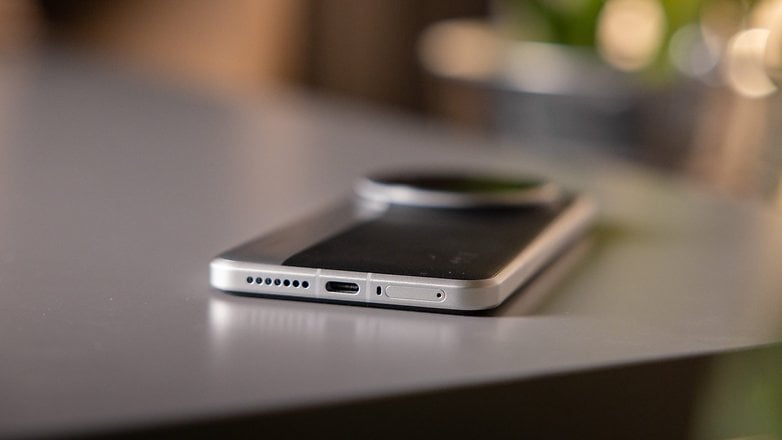
The Xiaomi 15 Ultra is also compatible with wireless charging at up to 80 W using a proprietary charger (also not included). And there is also reverse wireless charging to help friends or charge accessories in a pinch. There is no support for magnetic alignment when wireless charging (Qi2), but expect to see compatible cases from third-party brands.
Should you buy the Xiaomi 15 Ultra?
While we wouldn’t recommend getting the Xiaomi 15 Ultra at full price if you have the previous model, the number of upgrades over the Xiaomi 13 Ultra, and basically every other Xiaomi model, makes the new Ultra an easy recommendation, with the usual caveats when it comes to the Chinese brand.
Software support is not as long as similarly-priced Samsung or Google phones, and there were at least 10 third-party apps pre-installed (more if you don’t opt out in a post-setup step). On the other hand, performance was theoretically higher than on the rival Galaxy S25 Ultra we tested, even if not noticeable.
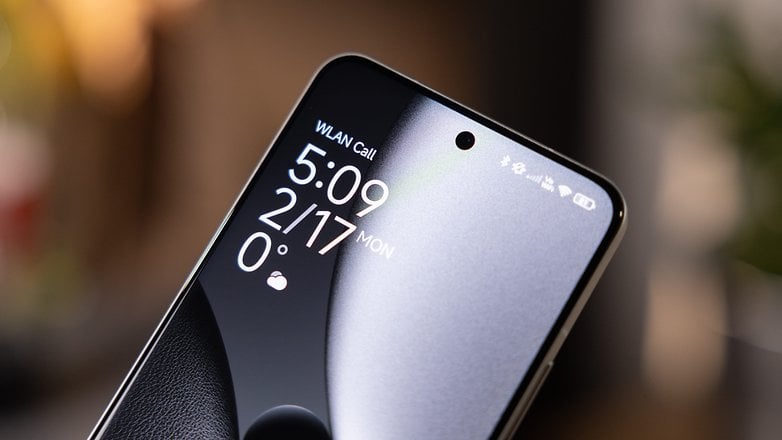
And the rest of the phone keeps this tone of a mixture of highs and lows. The ultra-wide camera was a bit disappointing–especially after testing the Xiaomi 15 Ultra after the Galaxy S25 Ultra with its upgraded ultra-wide–however, the 4.3x telephoto camera more than made up for that, with better results than other Ultras or Pros we remember.
Charging felt like a downgrade as well, but maybe Xiaomi set the bar too high with its 120 W charging phones. We still mark it as a negative, coupled with the lack of a charger in the box.
Where to buy the Xiaomi 15 Ultra
The Xiaomi 15 Ultra is not expected to launch in the United States but should be available for purchase on third-party marketplaces. The phone is available in two storage capacities: 512 GB and 1 TB, with three color options: Black, white, and the tested "Silver Chrome".
Select regions will also receive the "Xiaomi 15 Ultra Photography Kit Legend Edition" (phew!), with a hand grip for enhanced ergonomics while taking pictures. The grip features a shutter and video buttons, zoom controls, and a 2,000 mAh battery for longer runtimes.
